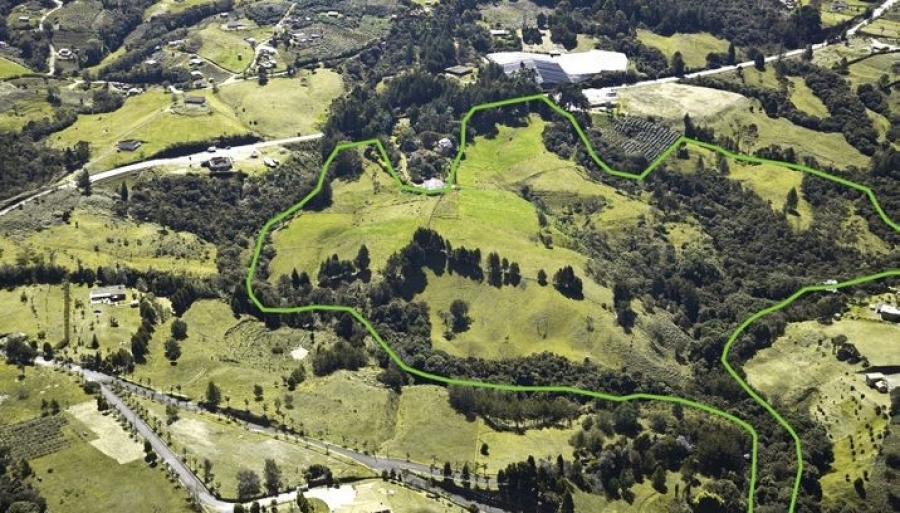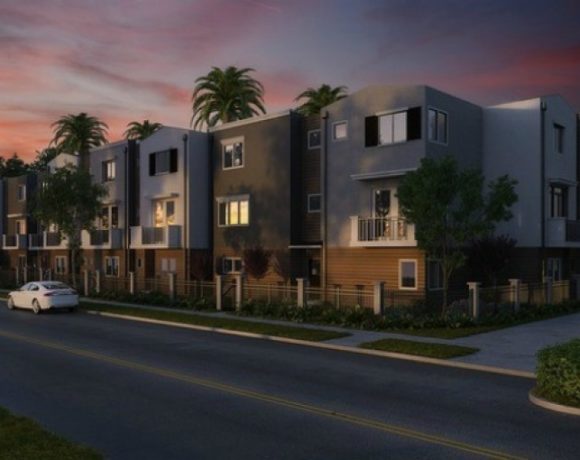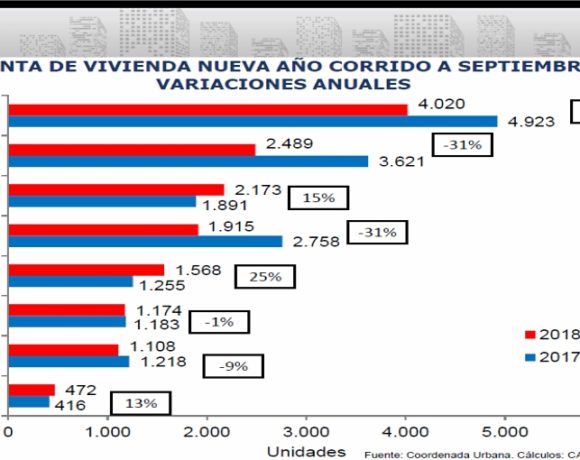Safest Real-Estate Investments in Metro Medellin: Part Two

Relatively safe investment options for real estate in Medellin include not only existing houses, apartments and commercial real estate, but also well-defined lots inside fully permitted “parcelacion” gated communities.
The “oriente” region (east of Medellin) is seeing an especially strong growth in such “parcelaciones,” with the bulk of buyers represented by those selling their high-end apartments in the posh (but crowded) El Poblado neighborhood, as well as new-arrival foreigners.
One such new “parcelacion” is Tres Corrientes (see photo, above), adjacent to the “variante al aeropuerto” highway, which connects the Las Palmas highway east of Medellin to the international airport at Rionegro.
In an October 12 interview with Medellin Herald, Tres Corrientes project developers Alonso Palacios and Rocio de Palacios explained that the 25-hectare farm that they bought nearly 50 years ago – for what today would be considered as a pittance — has now been converted into an upscale, 41-lot “parcelacion” gated community. Already, they’ve sold 33 of the 41 lots, hence more-than-recouping their considerable up-front investments.
Alonso is a now-retired civil engineer and a former contract manager for Medellin public utility EPM, while wife Rocio is a retired banking executive. Their formidable experience in civil-works construction engineering and finance served them well in their five-year-long odyssey to design, permit and execute the project.
But neither Alonso nor Rocio would recommend that a foreigner try to duplicate what they’ve done, as the expertise, patience and complex, stressful licensing hurdles required to oversee such a project would dwarf the capacities of most any foreign investor.
Among the challenges involved in this project: an unsettling lack of an accurate description of the legal boundaries of their farm property. When they sought a license to convert their farm into a residential gated community, the Antioquia “catastro” dropped a bombshell: “They said we didn’t own anything,” according to Alonso.
However, an updated survey — employing the modern, triangulation techniques used by Colombia’s official geographical institute (Instituto Geografico Agustin Codazzi) – revealed that the Palacios farm actually was 25 hectares rather than the 16 hectares described on the original property-registry documents when they bought the farm nearly 50 yeas ago.
With this updated survey, the Antioquia catastro fixed the new, accurate boundaries. This catastro document then allowed the Palacios to seek the all-important construction license from the municipality of Envigado, which is adjacent to Medellin.
Many other hurdles had to be overcome before construction could begin, however. Among them: Ensuring that the proposed development would meet regional planning rules (plan de ordenamiento territorial, or “POT”), as well as legal norms that limit the building area on each lot (20% in this instance) and minimum distance separating houses in the parcelacion (at least six meters, in this instance).
Envigado also required that the entire parcelacion could have only an average of 3.8 houses per hectare.
Other rules set minimum standards for the roads within the parcelacion, water and sewage standards, set-aside areas for forest, rules for administration, homeowners’ association rules, and a new rule that requires sewage-treatment facilities rather than septic tanks.
This latter requirement eventually led the Palacios to a local company –GrupoAqua – which imports modular sewage treatment plants (suitable for parcelaciones) that employ a novel, odor-free Italian technology.
Besides installing the sewage plant, the Palacios also had to plant some 2,300 trees, or more than 200 for each tree sacrificed during lot-preparation and street construction.
All utilities at Tres Corrientes are underground, including water, sewer, electric, phone, cable TV and internet connections – as is now typical of new “parcelaciones” in the Oriente region.
In addition, each lot requires a structural engineering study to ensure a stable foundation for each new house — and no house can be higher than two stories, according to the limits established by the curaduria (the building permit agency), they were told.
Another shock came when the Palacios were given the tax bill for the parcelacion project: COP1.6 billion (US$545,000 at this writing), which had to be paid up-front – within 12-months-time — before they could sell any lot.
Fortunately, the high demand for parcelacion lots at Tres Corrientes (and in neighboring parcelaciones) enabled quick recovery of this hefty tax payment.
But all these permitting, engineering, financing, tax and legal-standards challenges ought to give pause to any foreigner considering the idea of buying some random lot in Antioquia and then trying to subdivide it for resale.
“This wasn’t quite Quixotesque,” Alonso told Medellin Herald.
“But doing something like this requires management of many simultaneous tasks. We hired expert engineers, civil-works construction companies, pavers, designers, water-and-soil experts, environmental engineers, a real-estate sales firm and a fiduciary to manage the deposits of lot buyers.
“We put out to bid each task – time, task and budget, just like I did at EPM. We insisted that each contractor had a completion policy, covering quality, responsibility and time. And we got engineers and contractors that came highly recommended.
“There are many risks in doing something like this, and much work. But at the end, we’ve been happy with the results.”
















